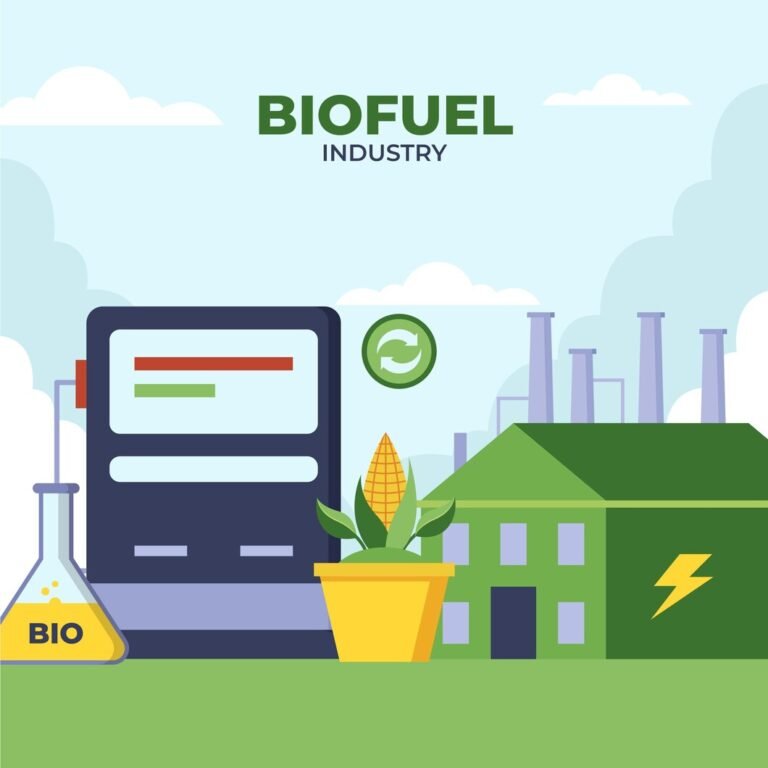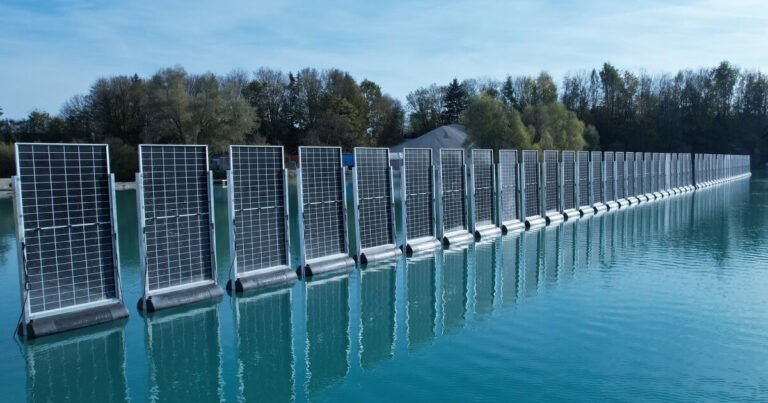Pros and Cons of Wind Farms
If you’ve ever driven past a stretch of open land and seen rows of tall, white turbines slowly spinning, you’ve seen the future of energy in motion. Wind farms have become more than just scenery—they represent our global effort to fight climate change and move toward a cleaner, healthier planet.
But here’s the truth: Wind energy isn’t just about clean air and spinning blades. It’s also about jobs, wildlife, community opinions, and how we balance progress with impact. Behind every turbine are stories—farmers leasing their land, engineers maintaining the machines, neighbours raising concerns, and policymakers navigating tough decisions.
According to the International Energy Agency (IEA), wind power made up about 8% of global electricity in 2024, up from just 3% in 2010. That jump is massive—and it’s still growing. In countries like Denmark, wind already provides more than 50% of the nation’s electricity. In the U.S., wind surpassed hydro in 2022 to become the country’s largest source of renewable electricity.
So what’s really behind the rise of wind power? And what are the trade-offs we need to talk about?

In This Article
- Understanding Wind Energy
- The Pros of Wind Farms
- The Cons of Wind Farms
- Balancing the Pros and Cons
- Innovations and Solutions
- Global Perspectives
- Actionable Advice: What Should You Consider?
- Conclusion
Understanding Wind Energy
Before we dive into the pros and cons, it helps to understand how wind farms actually make electricity.
A wind farm is essentially a collection of wind turbines situated in a specific area to produce electricity. Here’s a simple breakdown of the process:
- Capturing the Wind: The wind turns the blades of the turbine.
- Generating Power: These blades are connected to a shaft; as they spin, they drive a generator that produces electricity.
- Delivering Electricity: The generated power is transmitted through power lines and integrated into the electrical grid, supplying homes and businesses with energy.
There are two main types of wind farms:
- Onshore Wind Farms: These are built on land, often in rural areas where open spaces allow for optimal wind capture.
- Offshore Wind Farms: Situated in bodies of water, usually near coastlines, these farms harness stronger and more consistent winds found over the sea.
Today, offshore wind is booming in places like the UK and China. The U.S. is catching up fast with projects like Vineyard Wind off Massachusetts, which will power over 400,000 homes.

The Pros of Wind Farms
1. Environmental Benefits
Harnessing wind to generate electricity significantly reduces our carbon footprint. In the United States, wind energy helps avoid approximately 351 million metric tons of carbon dioxide emissions annually, which is comparable to taking 61 million cars off the road. Unlike traditional fossil fuels such as coal or natural gas, wind power produces no greenhouse gases during operation, making it a crucial ally in combating climate change.
2. Economic Benefits for Communities
Wind farms bring tangible economic advantages, especially to rural communities. Farmers and landowners can lease portions of their land for wind turbines, providing a steady source of income. For instance, many landowners receive annual payments for hosting turbines, which can be particularly helpful during challenging agricultural seasons.
Beyond individual benefits, wind farms stimulate local economies by creating jobs. According to the American Clean Power Association, in 2023, the wind industry invested $10 billion in new projects, contributing to nearly $330 billion of investment over the past two decades. The sector employs over 131,000 Americans across all 50 states, including 20,000 wind manufacturing jobs at over 450 facilities.
3. Energy Independence
Investing in wind energy enhances a nation’s energy security by reducing reliance on imported fossil fuels. Texas serves as a prime example. Historically dependent on oil and gas, Texas has transformed its energy landscape and now leads the U.S. in wind-powered electricity generation, accounting for 28% of all U.S. wind-sourced electricity in 2023. This shift not only diversifies the state’s energy portfolio but also insulates it from the volatility of global fuel markets
4. Scalability and Modularity
One of the appealing aspects of wind farms is their flexibility. They can be developed in phases, allowing for gradual expansion based on energy needs and available resources. This modular approach enables communities and developers to tailor projects to specific regional requirements and financial capacities, making wind energy accessible and adaptable.
5. Offshore Potential
Offshore wind farms present an exciting frontier in renewable energy. Positioned away from populated areas, they minimise land use conflicts and tap into stronger, more consistent winds found over the ocean. The United Kingdom’s Dogger Bank Wind Farm exemplifies this potential. Located over 130 kilometres off the northeast coast of England, once fully operational, it will be capable of powering up to 6 million homes annually. This project shows the vast opportunities that offshore wind energy offers in meeting large-scale electricity demands sustainably.
Learn More: Pros and Cons of Tidal Energy
The Cons of Wind Farms
1. The Wind Doesn’t Always Blow (Intermittency & Reliability)
Wind energy’s main challenge is its variability—electricity generation decreases when wind speeds drop, yet our need for power remains constant. This issue was evident during California’s August 2020 heatwave, when reduced wind and solar output coincided with peak electricity demand, leading to rolling blackouts affecting millions. The North American Electric Reliability Corporation (NERC) has highlighted that while batteries aid in balancing supply, they can’t fully compensate for wind’s unpredictability, emphasising the need for backup generation sources. Addressing wind intermittency requires a diversified energy mix and enhanced grid infrastructure to ensure a consistent electricity supply.
2. Turbines Aren’t Everyone’s Favourite View (Visual & Noise Concerns)
While wind energy garners widespread support, proposed turbines near residential areas often face opposition. Standing over 500 feet tall, these structures can significantly alter local landscapes. In Falmouth, Massachusetts, residents opposed nearby turbines, citing sleep disturbances due to low-frequency noise. This led to legal actions and a 2013 court ruling that restricted turbine operations to specific hours.
Comprehensive studies have not established a direct link between wind turbine noise and specific health issues. However, research indicates that such noise can cause annoyance and stress. A 2022 study noted that annoyance increased with higher noise levels from turbines.
Addressing these concerns is crucial for the community’s acceptance of wind projects. Strategies like maintaining appropriate distances from homes, involving residents in planning, and designing visually considerate turbines can help mitigate negative perceptions.
3. Wildlife Can Pay the Price (Environmental Impact)
Wind turbines can adversely affect wildlife, particularly birds and bats. Bats are especially vulnerable due to pressure changes near turbine blades, which can cause fatal internal injuries even without direct contact. Research indicates that wind turbines impact bat activity, leading to significant habitat loss in biodiversity hotspots.
Bird fatalities are also a significant concern, especially for raptors like golden eagles and hawks. The Altamont Pass Wind Resource Area (APWRA) in California has been notably associated with high raptor mortality rates. Studies have documented substantial bird deaths at this site, prompting efforts to mitigate the impact through measures like updating turbine designs and strategic siting.
While advancements in turbine technology and better site selection have reduced wildlife fatalities, ongoing research and adaptive management are essential to further minimise the environmental impact of wind farms.
4. Big Land, Big Needs (Land Use & Infrastructure)
Wind turbines require significant spacing—often hundreds of meters—to optimise airflow, resulting in wind farms spanning large areas. This extensive land use can lead to concerns from farmers, ranchers, and conservationists. However, approximately 98% of the land beneath wind turbines remains usable for other purposes, such as agriculture, allowing for dual land use.
In the U.S. Midwest, particularly Iowa and Kansas, many farmers lease land for turbines, gaining financial benefits while continuing agricultural activities. Conversely, in more densely populated regions, wind farm development can face opposition due to land use concerns.
Once energy is produced, it must be transported via transmission lines, which are expensive and sometimes unpopular. In Texas, grid congestion and inadequate transmission planning have delayed wind projects despite the state’s leading wind energy production. The Electric Reliability Council of Texas (ERCOT) has proposed significant investments to expand transmission infrastructure to address these challenges.
5. Politics and Pushback (Economic Uncertainty & NIMBYism)
Wind energy development often depends on subsidies and policy support, which can fluctuate due to political changes and public opinion. In 2022, Germany experienced a significant slowdown in onshore wind expansion, installing only 551 turbines with a combined capacity of 2,403 megawatts. This pace is insufficient to meet the country’s 2030 renewable energy targets. The German Wind Energy Association attributed this decline to local opposition and bureaucratic obstacles.
In the UK, stringent planning regulations have historically allowed a single objection to delay onshore wind projects for extended periods. Although recent policy changes aim to expedite approvals in supportive communities, challenges persist. For instance, as of November 2023, no new applications for onshore wind farms had been submitted in England since the easing of planning rules earlier that year. This stagnation highlights ongoing community resistance and regulatory complexities as significant barriers to wind energy development.
Balancing the Pros and Cons
Every energy source has trade-offs. While wind farms offer significant environmental and economic benefits, they also present social and environmental challenges that can’t be ignored. It’s crucial to weigh these factors carefully.
Dr. Leah Stokes, a political scientist and energy policy expert, emphasises the importance of thoughtful deployment:
“It’s not about choosing wind or no wind. It’s about deploying smartly—with community input and scientific oversight.”
To aid in this balanced approach, the National Renewable Energy Laboratory (NREL) offers a Wind Resource Map, an interactive tool that helps identify optimal locations for wind farms based on wind speed, land use, and proximity to existing infrastructure. Utilising such resources ensures that wind projects are both efficient and considerate of local communities and ecosystems.

Innovations and Solutions
1. Advanced Storage Solutions
To tackle the intermittent nature of wind and solar energy, large-scale battery systems like Tesla’s Megapacks have become essential. For instance, in June 2024, Ørsted integrated a 300 MW Tesla Megapack system into the UK’s Hornsea 3 Offshore Wind Farm. This setup stores surplus energy, ensuring a steady power supply even during low-production periods.
2. Wildlife-Friendly Innovations
Protecting wildlife is paramount in wind energy development. A 2020 study demonstrated that painting one turbine blade black can reduce bird fatalities by over 70%. Additionally, ultrasonic deterrent systems have proven effective in decreasing bat fatalities near wind turbines. Research led by Texas State University in 2020 showed that such systems reduced bat deaths by 50%, with some species seeing reductions up to 78%.
3. Advancements in Offshore Wind
Floating wind turbines are revolutionising offshore wind energy by enabling installations in deeper waters, thus minimising visual impact and expanding viable locations. The Kincardine Offshore Windfarm in Scotland, operational since 2021, exemplifies this with its six floating turbines generating a combined 49.5 MW. Similarly, Norway’s Hywind Tampen project, commissioned in November 2022, boasts 11 floating turbines with a total capacity of 88 MW, supplying power to offshore oil and gas platforms.
4. Community Ownership Models
Community-driven wind projects have fostered public support and local economic benefits. In Denmark, by 2001, over 100,000 families participated in wind turbine cooperatives, installing 86% of the nation’s turbines. Germany mirrors this approach; as of 2016, nearly half of its renewable energy capacity was citizen-owned, reflecting strong public endorsement.
Learn More: Pros and Cons of Hydroelectric Power
Global Perspectives
1. Denmark: A Global Wind Leader
Denmark has long been at the forefront of wind energy adoption. In 2023, wind power accounted for nearly 60% of the country’s electricity generation, the highest share globally. This success stems from early adoption, supportive government policies, and strong community involvement.
2. China: The World’s Largest Installer of Wind Turbines
China continues to dominate the wind energy sector. By the end of 2023, the country had installed an additional 79.37 GW of wind power capacity, bringing its total to an impressive 474.60 GW. This expansion aligns with China’s broader strategy for energy security and reflects its commitment to reducing its reliance on fossil fuels.
3. United States: Wind Energy’s Growing Role
In the United States, wind power has become a significant component of the renewable energy landscape. Texas leads the nation with an installed wind capacity of 40.7 GW in 2023, accounting for 28% of the national total. This growth is a testament to the state’s favourable policies and abundant wind resources.
4. India: Rapid Growth in Wind Energy
India is experiencing rapid growth in wind energy installations, particularly in states like Gujarat and Tamil Nadu. Gujarat now leads with the highest wind capacity, while Tamil Nadu follows closely. This expansion is driven by the need for sustainable energy solutions and improved energy access across the country.
Actionable Advice: What Should You Consider?
For Policymakers:
- Mandate Community Consultations and Environmental Assessments: Engaging local communities early in the planning process fosters trust and addresses concerns proactively. For instance, the Delburn Wind Farm in Australia prioritised early community engagement, leading to more inclusive project development.
- Support Research on Wildlife Mitigation Technologies: Investing in technologies that minimise wildlife impact is crucial. The U.S. Department of Energy suggests developing ultrasonic deterrents to reduce bat fatalities around wind turbines.
- Incentivise Hybrid Systems (Wind + Battery + Solar): Encouraging the integration of wind, solar, and battery storage can enhance grid reliability. Studies indicate that such hybrid systems can provide reliable power at a lower cost by sharing infrastructure.
For Communities:
- Advocate for Co-Ownership Models to Share Benefits: Community ownership can lead to higher public acceptance and local economic benefits. In Denmark, community-owned wind projects have empowered residents and fostered support for renewable energy initiatives.
- Demand Transparent Reporting from Developers: Transparency in project planning and execution builds trust. Research suggests that when developers are open about their processes, community attitudes toward wind projects improve.
For Individuals:
- Support Policies and Politicians That Favour Clean Energy: Public backing influences policy decisions. Surveys have shown that a significant majority of Americans, across the political spectrum, support policies promoting renewable energy.
- Educate Yourself and Engage in Local Planning Discussions: Being informed enables meaningful participation. Initiatives like the U.S. Department of Energy’s Wind for Schools program engage citizens in wind energy discussions, fostering a knowledgeable community base.
Conclusion
Wind farms are neither perfect nor pointless. They’re a crucial piece of a cleaner, more resilient energy future. Like any major shift, they require thoughtful implementation, inclusive dialogue, and ongoing innovation.
Whether you find wind turbines inspiring or intrusive, the conversation around them is one we all must be part of. Because the wind that turns those blades carries not just electrons but the potential to power a better tomorrow.







